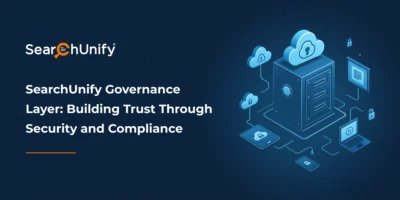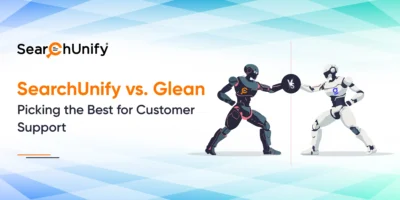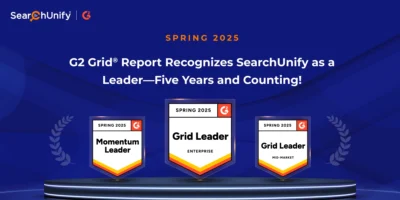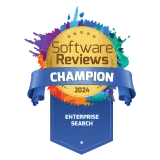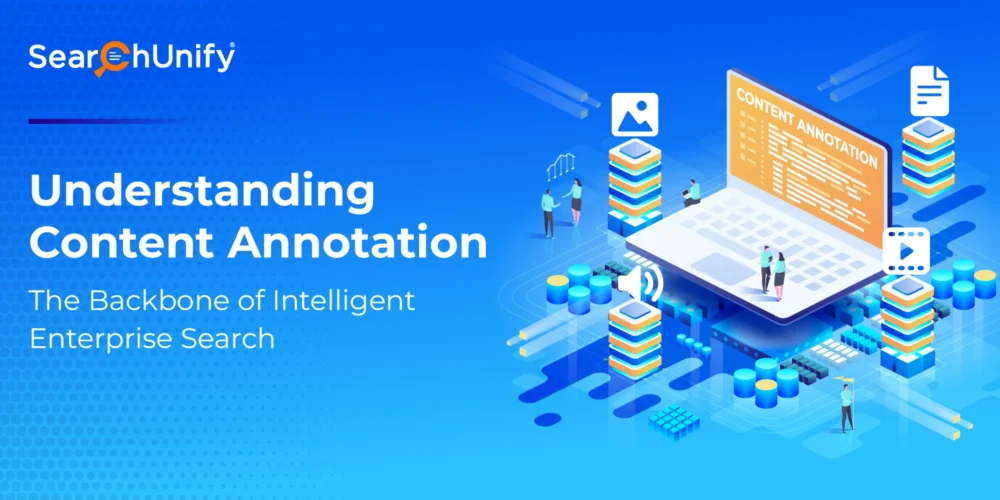
Enterprises today are sitting on a goldmine of information scattered across community forums, help centers, product documentation, and more. However, without structure, this wealth of data remains underutilized.
Manual classification was once the norm but is no longer viable at scale. That’s where content annotation steps in, offering a smarter and more scalable way to organize unstructured content, especially within an enterprise search solution.
Using machine learning (ML) and natural language processing (NLP), content annotation automatically tags content based on a predefined taxonomy.
The result? Enhanced discoverability, richer search experiences, and smarter automation—key outcomes for any modern enterprise search software.
From Manual Tagging to Automated Intelligence
Imagine managing a small community forum with 10 threads. Tagging each thread with the corresponding product name or topic is manageable. But scale that to 10,000 or even a million threads, and manual tagging becomes a roadblock to efficiency.
Content annotation eliminates this hurdle by automatically applying entity-based tags across content sources. The tags are derived from a controlled vocabulary called taxonomy, where admins define entities (like product, issue type, etc.) and their corresponding values.
Once annotation rules are set, the system takes over:
- Content is automatically analyzed and tagged using the defined taxonomy.
- Synonym support ensures that variations in language are recognized and categorized correctly.
- Relevancy thresholds and filters ensure only meaningful tags are applied.
This structured classification powers more relevant and context-aware results in enterprise search software, allowing for precise filtering and accurate information delivery.
Making Annotation Work for You
With the right enterprise search solution, annotation isn’t just automated—it’s also fully customizable and trackable. Here’s how it typically works:
- Annotation rules define how tags are applied across specific content sources and objects.
- A control panel gives admins oversight over reviewing tagged data, setting thresholds, and appraising or refining entity values.
- The content annotation playground allows real-time entity recognition testing and tweaking on sample content.
- Support for resubmission history and backend job requests ensures annotations are correctly applied even after new content ingestion.
Annotation jobs can be triggered manually or set to run periodically, ensuring your content ecosystem stays organized and optimized over time.
Why It Matters: Real Impact Across Functions
The benefits of automated content annotation ripple across the entire organization:
- Improved Search Relevance: Users can access the most contextually accurate content faster.
- Better Self-Service: Helps customers find answers without raising tickets, improving case deflection.
- Smarter Agent Support: Surfaces relevant documents and responses during live support.
- Content Insights: Enables analysis of content gaps, trending topics, and performance by tag.
Conclusion
Content annotation empowers organizations to unlock the full potential of their content, driving intelligent search, personalized experiences, and AI-driven automation.
Solutions like SearchUnify’s enterprise search leverage robust content annotation capabilities with AI-powered intelligence, utilizing taxonomy-based tagging, synonym management, and customizable workflows. This ensures the most relevant content surfaces, creating a seamless, personalized search experience across channels.
By shifting from manual tagging to smart annotation powered by taxonomy and machine learning, enterprises can make their content work for them, not against them.
Curious to know more about it and how it could work for you? Let’s talk.


